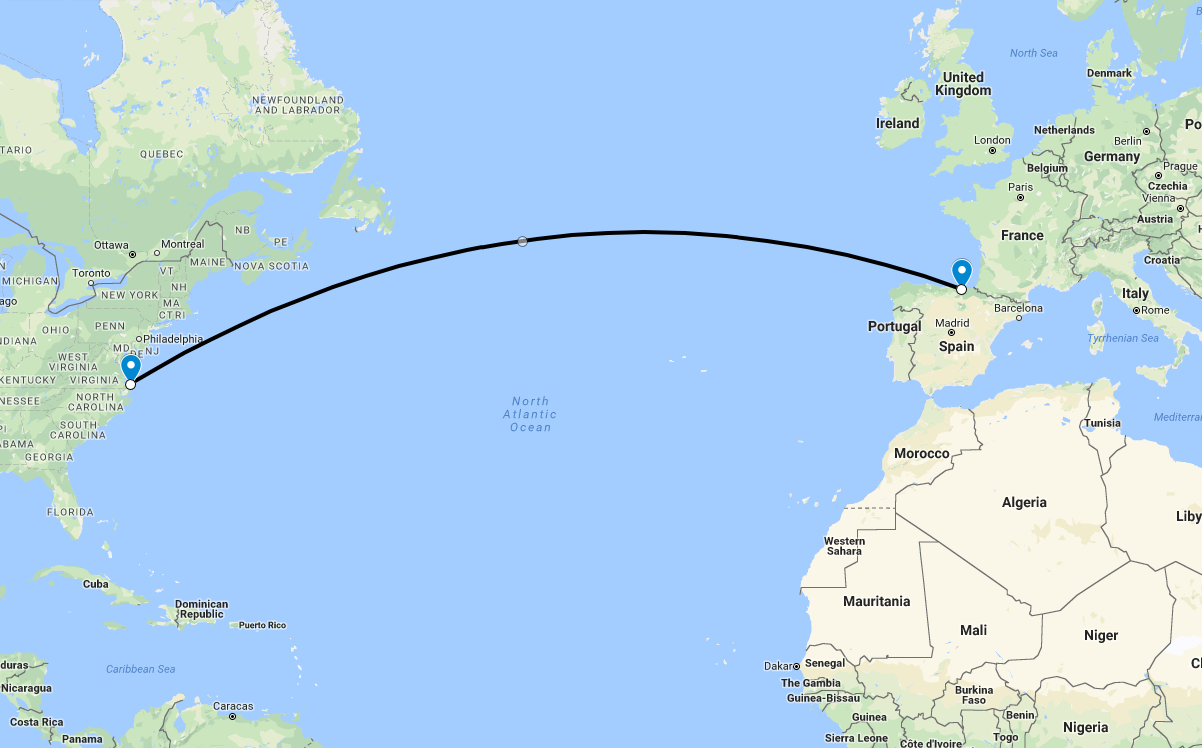By Jean-Jacques DeLisle, contributing writer
Though not destined to be fully operational until 2018, the 160-terabits-per-second data cable joint venture among Facebook, Microsoft, and infrastructure company Telxius is soon to be the highest-capacity subsea cable in the world. Claims of the cable’s capability suggest that the connection will be capable of handling the equivalent data of streaming 71 million HD videos simultaneously. Obviously meant for grander things than just fulfilling intercontinental YouTube and Netflix binge-watching, the cable, called Marea, which is Spanish for “tide,” originated as a method of enhancing and diversifying the connectivity between Europe and the United States .

Virginia to Bilbao.
Marea stretches from Virginia Beach, Virginia, all the way to Bilbao, Spain, and provides a different distribution compared to all prior transatlantic cables originating in New York City and New Jersey. Having only a single hub area for transatlantic communication became an issue in 2012, when Hurricane Sandy disrupted communication for several days.
“Marea comes at a critical time,” president of Microsoft, Brad Smith, was quoted as saying from Subsea World News . “Submarine cables in the Atlantic already carry 55% more data than trans-Pacific routes and 40% more data than between the U.S. and Latin America. There is no question that the demand for data flows across the Atlantic will continue to increase.”
Europe isn’t the only region of high-capacity focus. It’s likely that this move will also enable better connectivity with emerging markets in the Middle East and Africa, where many tech companies are anticipating future services and profits. As services such as Microsoft Office 365, Xbox Live, Facebook, Instagram, and WhatsApp attempt to provide lower-latency and higher-capacity services, these types of data lines will likely become more commonplace. This position is further supported by other tech-companies-turned-infrastructure-builders, such as Google, opting to run their own cables from the U.S. to Japan, South America, and other countries.
One of the largest bottlenecks in upcoming virtual reality, augmented reality, high-definition video, and other still futuristic data services is the capacity and latency of the network infrastructure between the cloud storage and processing centers and end users. Another aspect of concern is network and service availability. With new intercontinental data cables like Marea, there could also be greater potential to have cloud services provided globally in regions where access to sustainable energy and emerging markets opens new business opportunities in this next-generation digital era.
Advertisement
Learn more about Electronic Products Magazine





